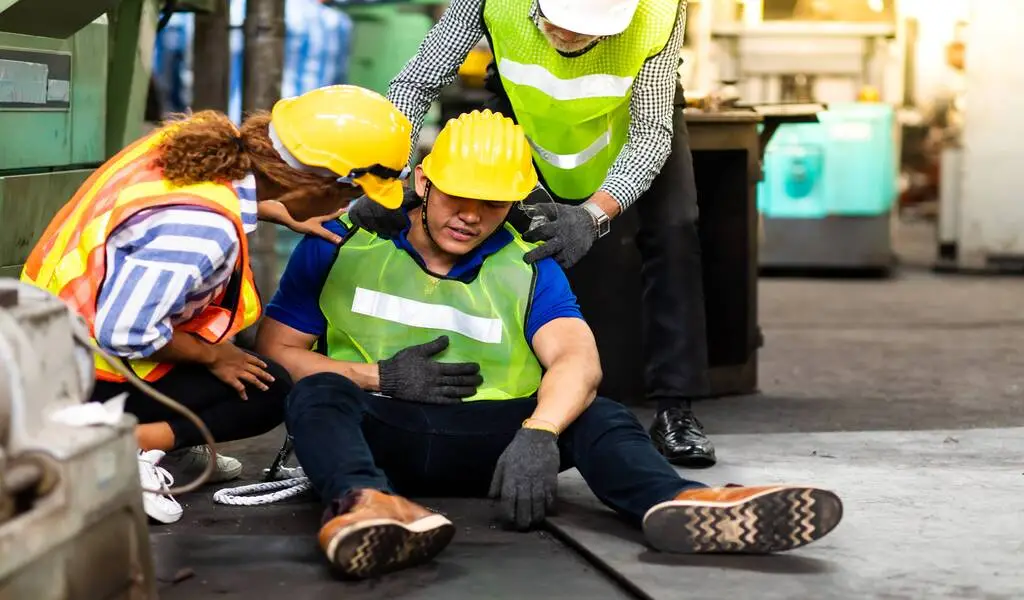Learning
Leading Causes of Workplace Injuries in Australia

In a bustling nation like Australia, workplace injuries have become a prevalent concern affecting the workforce. These incidents not only pose a risk to employees’ well-being but also have financial implications for businesses. In this article, we will explore the leading causes of workplace injuries in Australia and shed light on the keyword “Workplace injuries.”
Australia, known for its thriving job market and diverse industries, also faces the challenge of workplace injuries. These incidents can range from minor accidents to life-altering injuries, making it crucial to understand their causes and take preventive measures.
The Importance of Workplace Safety
Workplace safety should be a top priority for employers. It not only protects employees but also ensures the smooth operation of a business. Neglecting safety measures can lead to costly compensation claims and a tarnished reputation.
Slips, Trips, and Falls
One of the primary causes of workplace injuries in Australia is slips, trips, and falls. These accidents often occur due to wet floors, uneven surfaces, or cluttered workspaces.
Machinery and Equipment Accidents
Employees working with heavy machinery and equipment are at risk of accidents. Lack of proper training and maintenance can result in severe injuries.
Overexertion and Muscular Strain
Overexertion and muscular strain are common in physically demanding jobs. Employees pushing themselves beyond their limits can suffer from strains and sprains.
Vehicle Accidents
Work-related vehicle accidents are a significant concern. This includes accidents involving company vehicles or employees commuting to work.
Occupational Diseases
Long-term exposure to hazardous materials can lead to occupational diseases. These conditions may not manifest immediately but can have serious consequences.
Chemical Exposures
Employees working with chemicals face the risk of exposure. Inadequate safety measures can result in chemical burns, respiratory issues, and other health problems.
Construction Site Hazards
Construction sites are inherently risky environments. Falls from heights, collapsing structures, and heavy equipment accidents are common.
Inadequate Training
Insufficient training can leave employees ill-equipped to handle their responsibilities safely. Proper training is essential in preventing accidents.
Fatigue and Lack of Sleep
Fatigue and sleep-deprived employees are more prone to accidents. Long hours and demanding schedules can lead to reduced alertness.
Workplace Violence
Workplace violence is a concerning issue. It can stem from conflicts among employees or external threats.
Age and Experience Factors
Young and inexperienced workers are more likely to be involved in workplace accidents. Adequate mentoring and supervision are crucial.
Impact on Businesses
Workplace injuries not only harm employees but also impact businesses negatively. Compensation costs, legal issues, and a decrease in productivity can all result from such incidents.
Specialty of Workplace Safety
Workplace safety is a critical aspect of any organization, and its specialty lies in ensuring the well-being and protection of employees while they perform their job duties. Here are some key specialties of workplace safety:
- Preventive Measures: Workplace safety specializes in implementing proactive measures to prevent accidents and injuries. This includes conducting risk assessments, identifying potential hazards, and taking steps to mitigate them before they can harm employees.
- Regulatory Compliance: Workplace safety adheres to local, national, and international safety regulations and standards. It ensures that organizations comply with laws and guidelines set forth to protect workers.
- Employee Training: One of its specialties is providing employees with the necessary training and education to perform their tasks safely. This includes training on the proper use of equipment, handling hazardous materials, and understanding emergency procedures.
- Safety Culture: Workplace safety promotes a culture of safety within the organization. It encourages open communication about safety concerns, reporting of incidents, and the involvement of all employees in maintaining a safe environment.
- Risk Management: Workplace safety specializes in risk management strategies. This involves identifying potential risks, evaluating their impact, and developing strategies to minimize or eliminate these risks.
Conclusion
In conclusion, workplace injuries in Australia are a significant concern that affects both employees and businesses. Preventive measures, such as proper training and safety protocols, are essential in reducing these incidents and ensuring a safer work environment.
In this article, we’ve delved into the leading causes of workplace injuries in Australia, emphasizing the importance of workplace safety. By understanding these causes and taking proactive steps, both employers and employees can work together to create a safer and more productive work environment.
SEE ALSO: How To Properly Apply Sunscreen To Safeguard Your Skin From Harmful UV Rays




























